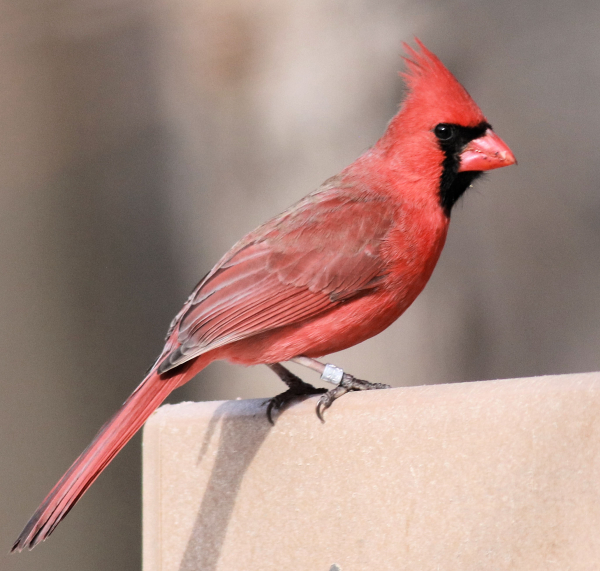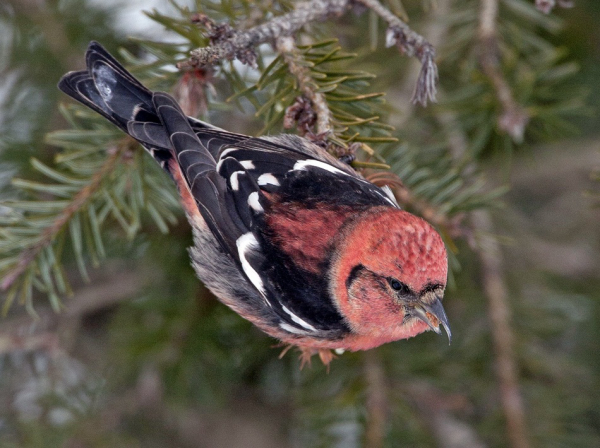
Northern Cardinals are one of the most common and most popular seed-eating birds (photo by Paul Konrad).

White-winged Crossbills would be a great addition to any birder’s feeding station or evergreen trees.
|
Anticipation – we find ourselves thinking about what birds we can expect as the season progresses toward winter, and what kinds of birds we can hope to attract. For any birders, the answer is a product of geography, the winter range of the species in question, and having the right stuff – a variety of foods and water. Foods include a quality seed mix that emphasizes black oil sunflower seeds, a tube feeder filled with nyjer thistle seeds, suet, peanuts and other nuts, and in some areas where hummingbirds overwinter, a nectar feeder. But what birds can you really expect?
A great way to get an understanding of what birds might filter into your feeding station is to refer to the information analyzed and provided by FeederWatch, where you can find out the Top 25 species that traditionally visit feeders in your state or province (see the link below). That’s one of the many ways FeederWatch has contributed to our understanding of winter bird populations and monitored variations in annual bird movements, migrations, and irruptions.
You can also check your “region” out for the Top 25, but that information will be less accurate than the state or province list due to the much larger expanse of land included. Even the state list will probably surprise you with some birds that are not on your radar due to variations in habitat types and geography within a state. But it’s a great place to glean a little more information, and maybe even to contribute your own feeder visitor counts as a FeederWatch participant.
Check out your Top 25 lists at Top 25 Feeder Birds (feederwatch.org)
When you compare the Top 25 list for your area to winter birds that have visited your feeders in the past, you may want to double-check to make sure you are offering the type of foods “missing” birds prefer. By adding their favorite food to your feeding station, you may entice them this year. Or it may be a matter of providing fresh water if you aren’t offering water in a heated bird bath.
For example, our Top 25 state list suggests we could attract White-winged Crossbills, one of the most attractive winter birds from the northern forests. Our seed feeders are well stocked, and our heated birdbath is plugged in, so all we can do now is cross our fingers and hope this will be the second winter in the past 20 that these impressive birds visit our feeding station. We are guessing the White-winged Crossbills on the Top 25 list for our state come into the northern forested regions of our state, whereas we live in the southern part of the state where pine trees are scarce. Nonetheless, we are hoping crossbills and a variety of other birds stop by this winter!
It’s an exciting time of the year, when individuals of a new species could arrive any daylight hour of any day – so be aware, be prepared, and enjoy a memorable season monitoring the birds your feeding station.
Share your backyard birding experiences and photos at editorstbw2@gmail.com